The Call of Alpe D’Huez
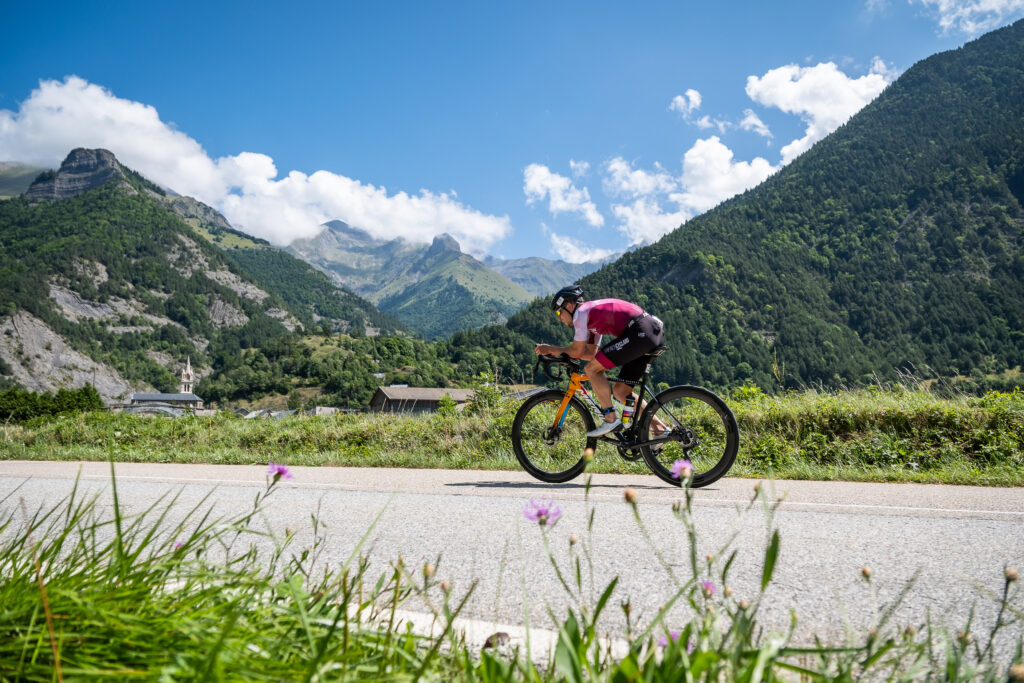
All photos courtesy Alpe D’Huez Triathlon
Most triathletes dream of Kona, but the only race that ever captured my heart was Alpe D’Huez. The mountainous bike course winds through three big cols in the Alps and includes over 3,000m of climbing, finishing up the famous 21 bends of Alpe D’Huez. Bookended by an icy 2.2km swim and an hilly 19.2km run at altitude on a mix of terrain, it’s unforgiving … and simply magnificent. It’s a race on many people’s bucket lists, but for me, once would never be enough.
What makes Triathlon Alpe D’Huez special is its namesake, and the other mountains that define its “parcours” (French for course). The crown jewel is, of course, the climb of Alpe D’Huez, which has appeared in the Tour de France over 30 times. Its stacked switchbacks hosted the 1986 showdown between Greg LeMond and Bernard Hinault, the unforgettable accent from Tom Pidcock in 2022 and the beginnings of historical battles in the Tour de France Femmes, like Demi Vollering’s attack for the yellow jersey in 2024. And then there are the thousands of cycling pilgrims that forge their own campaigns on the eternally stoic slopes, enjoying the suffering and beauty that go hand-in-hand with big ascents.
Even though we swim and run, triathletes are cyclists, too, and there is something special about riding on the same slopes as the world’s best in their finest and most defining moments. There is also something great about getting away from the flat and fast that so often characterize triathlon bike courses.
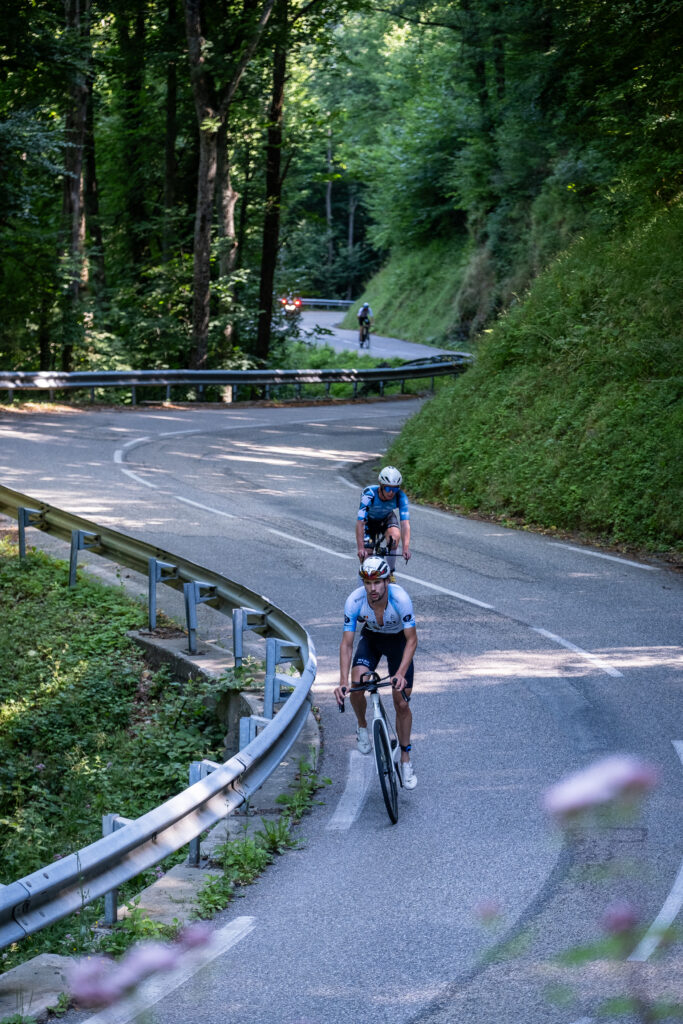
Which is what brought me to Alpe D’Huez in the first place.
As a new triathlete, I didn’t have a time trial bike so I was looking for races where it would be less of a deficit but, more importantly, I had fallen in love with cycling, my first sport, because of the mountains. I loved to climb and I prickled with glee when I found out about the race. I had never raced anything so long, but time seemed to fly during the race. I finished in the top 10, won my age group, and fell head over heels in love with the race.
The next year I came back and decided to DNF on the bike only to realize I still had to ride up Alpe D’Huez to get my shoes out of T2. But the failure turned into a great ride as I cheered others on, helped people change flats, gave out my gels like lifelines, and actually enjoyed the view. I was gutted, but I knew I had helped at least two people who otherwise wouldn’t have finished, and that was a pretty big dose of magic.
I didn’t race Alpe D’Huez for many years after that. I took my pro card and started racing on the half-IRONMAN circuit (70.3 and other half-distance races), and race selection had different criteria than finding a non-tri bike friendly course with crazy amounts of climbing. Two seasons in, however, my career was derailed by a woman who drove right through a stop sign and straight into me while she was talking on a cell phone. After a long rehab, two major surgeries, attempts to come back, a year long bout of Epstein Barr, and watching the sport move on without me, I found myself selecting races not based on what I thought I should do, and more about what my heart wanted–and what it wanted was mountains.
Which brings me back to this year’s Triathlon Alpe D’Huez.
Logistics
Perhaps the only really bad thing about Alpe D’Huez is getting there. Quite frankly, it’s a big pain. Nestled in the heart of the Alps, the only way to arrive in the village is by car, or stringing together a series of planes, trains and multiple buses. The stress and irritation of the logistics can be enough to put any athlete lugging a bike bag off the race, but then you get there … Once you start driving into the valley, the walls grow into awesome mountains and the overwhelming splendour, mixed with anticipation, erases any travel frustration.
The long-distance race is, oddly, mid-week, typically a Wednesday or Thursday, but there are races all week from kids events to a very competitive duathlon. For such a big race, the atmosphere is remarkably relaxed. A big part of that is the fantastic organization and another big part is that it’s an independent race. The organizers have figured out what works best for the race–from course adjustments and allowing people to check in their bike on race day, to pre-race communication–and they aren’t afraid to implement feedback or make changes to improve.
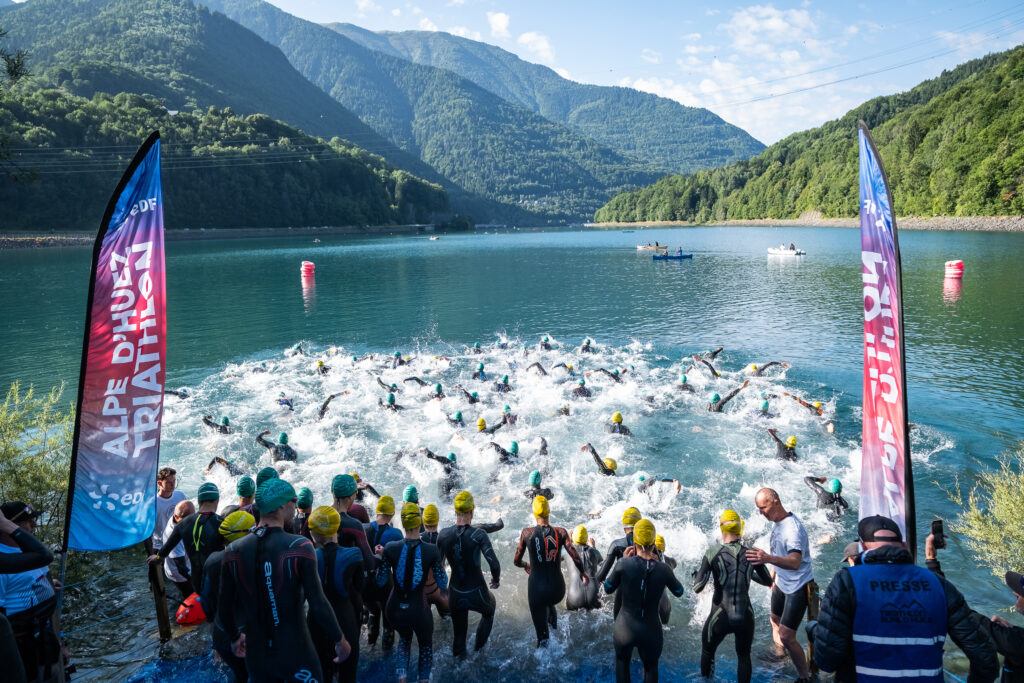
Race Day
One of the organizers’ best decisions, in my book, is the humane 9:30 start time. You can check your bike in on race day morning and, although split transition races can be a logistical nightmare, there are plenty of easy options to get you and all your gear to the right place at the right time, including the very European option to ride to the start.
The water is notoriously cold, typically around 16 C (60.8 F), but the electrical dam lake is almost always calm and clear. (Using a neoprene cap or doubling up on your cap is standard practice here.) The pro men and women start in the water, after which there is a rolling age group start. But, let’s be honest, the race starts when the swim ends.
After coming out of the water and charging through the short transition, you have about 50 m until the first hill. Whether you get into your shoes fast or wait until the top, the next 25 km is flat and fast. It’s also the most dangerous part of the course. Since it’s the only valley-access road, it’s open to traffic. There’s a bike lane, but the starting crowds take time to thin out and at times it’s draft or ride in traffic. Turn off the main road, however, and the beauty begins with the first beast: the Col de la Morte.
Into the Mountains
Yes, for all you French speakers, that does mean “death pass.” The 13 km climb goes up 938 m (3,077 feet) and has an average gradient of 7%. It’s shaded, quiet, and, perhaps giving a nod to its name, the hardest place to pace yourself. It’s where all the slower swimmers will be making up time and where the herd already starts to thin, but burn too many matches here and you’ll pay for it later.
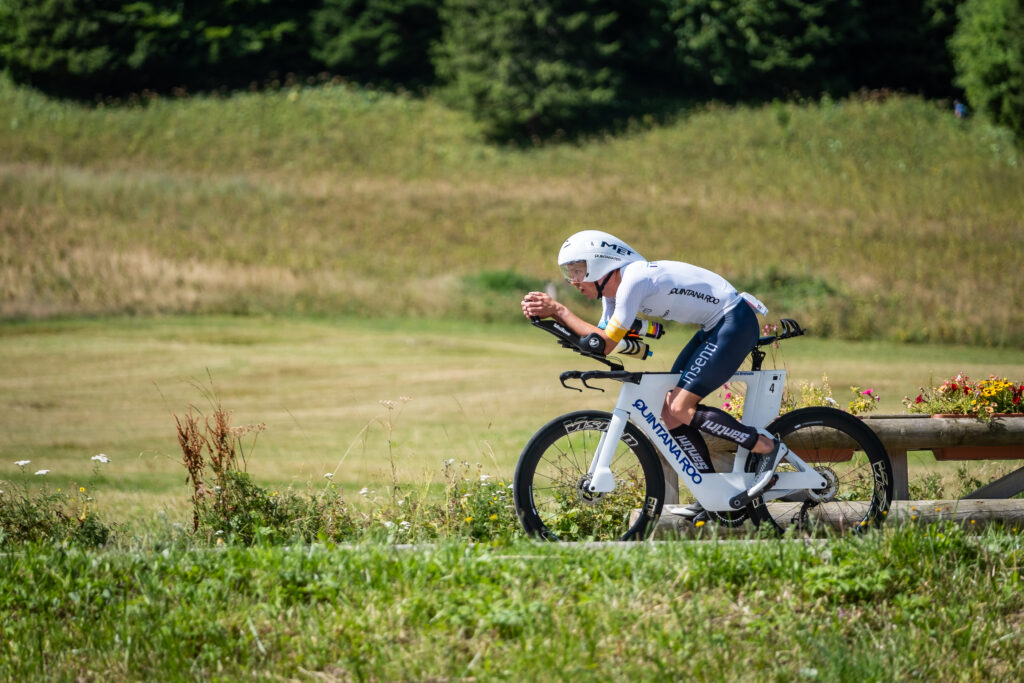
A fast descent will take you to a small short climb, one that is often forgotten, but still involves 2km of climbing before another long fast downhill section. The second big climb, Col d’Ornon, is deceiving. Broken up by quaint French villages, its gentle gradient of 4% makes it nagging rather than demanding, but you’ll feel that nag after you complete all 14 km.
The most technical descent, the Col d’Ornon down to Bourg d’Oisans, is the only part closed to on-coming traffic. With rock slides often sprinkled on parts of the road, tight technical switchbacks, and high speed, it will test even the most confident descender.
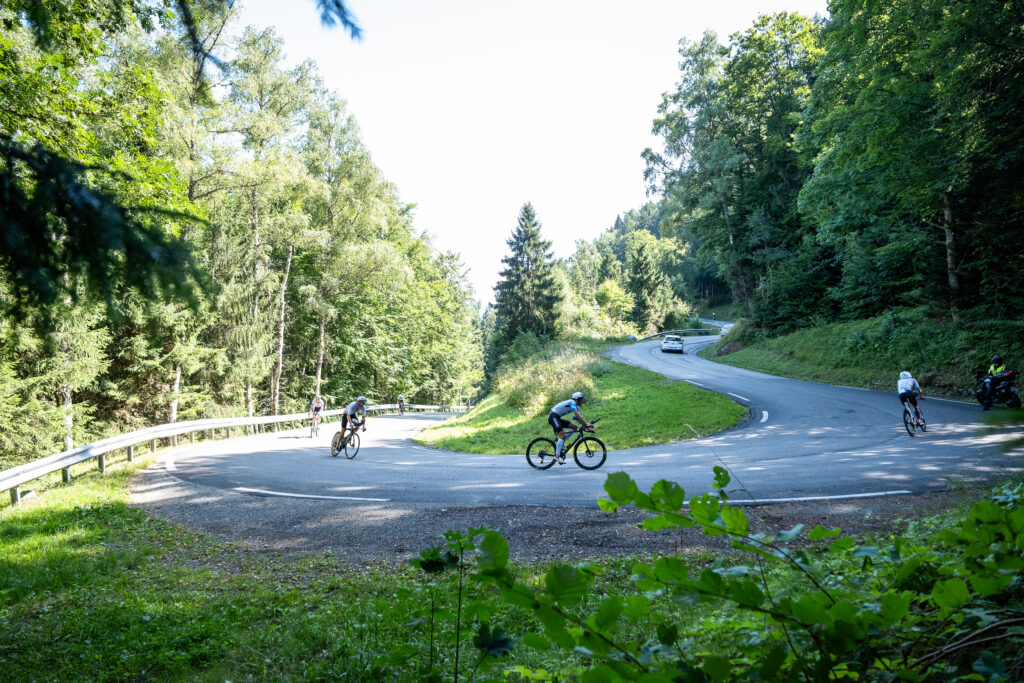
Fly through the village at the bottom (and the cheering spectators), then you hit the slopes of the colossal Alpe D’Huez. The climb that you’ve no doubt come all this way to experience will hit like a brick wall. The first 4 km are steep, up to 11%, and when the adrenaline wears off, it’s time to see who has paced the bike well.
Each switchback is named and has a number so, fortunately or unfortunately, you’ll know exactly how far you have to go. The race is quiet here and, even though you’re racing, the main battle is between you and the mountain. You’ll get a much needed boost from the crowded aid station and a tiny dose of Tour de France vibes through the fan zone before you climb above the trees and into the village of Alpe D’Huez.
If you can tear your eyes away from the pavement, you’ll take in beautiful views (bend 9 is my favourite). If you can be in the moment, you can relish the fact that you’re racing on one of Europe’s most legendary climbs where so many incredible athletes have made history. And, if you can be grateful that you’re actually doing one of the toughest and most iconic triathlons, you might just get a few more watts.
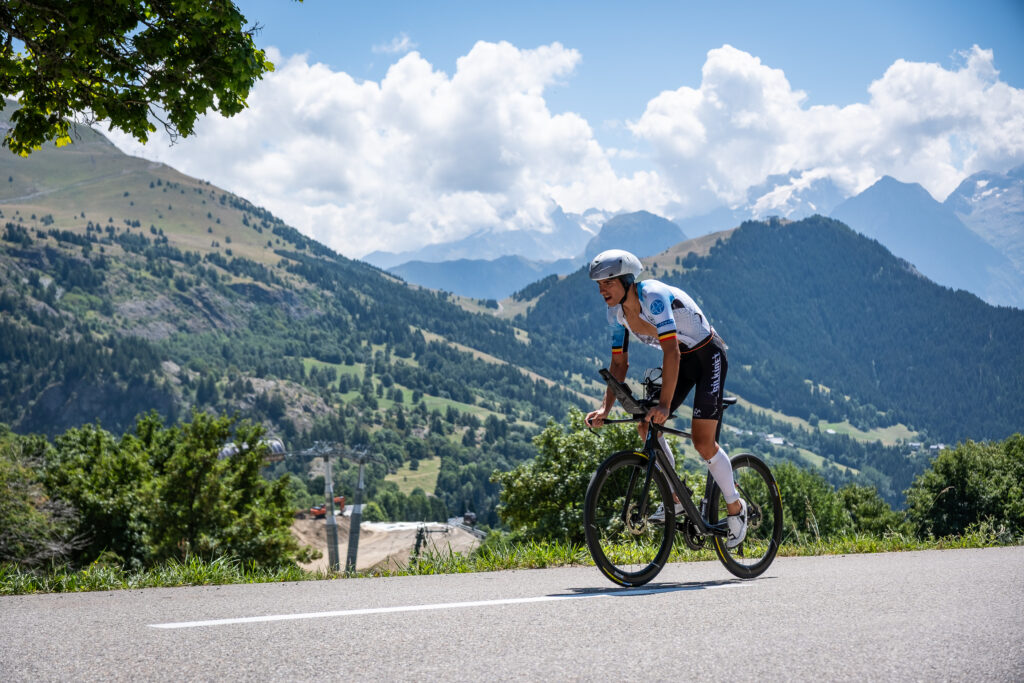
T2 to Run
One of the hardest parts is getting from the “mental top” of the climb to transition. Once you arrive in the village, there is still about a kilometer and, yes, the road still goes up.
The crowds are great around T2, but you might miss the bike once you start running. The three-loop run course might not get much attention, but it is tough. It’s hilly, including some steep downhills, and it includes a mix of trail, pavement and loose gravel. And don’t forget the altitude. Up at 1,450 m (4,757 feet), you’ll notice a lack of oxygen on the long uphill, but by the time you feel it you’ll be speeding downhill back toward transition for another loop.

After 19.2km, you’ll cross the finish line, but the unique experience isn’t over. The finishing gift isn’t always a T-shirt and each year it is surprise. A plush toy marmotte and a broad-brim hat have been fun and surprising ways to celebrate every finisher.
Epilogue
The 2025 edition saw the most competitive pro field in the race’s history and it was Norwegian Jon Breivold who took the win. Coming out of the swim a few minutes behind, he laid down a 3:45 bike split to take the lead and the eventual win in 5 hours and 30 minutes. While Frenchman Louis Richard almost matched Breivold’s split and bettered his run, it wasn’t enough to make up for his early swim deficit. Austrian Thomas Steger, who sat in second most of the day, rounded out the podium.
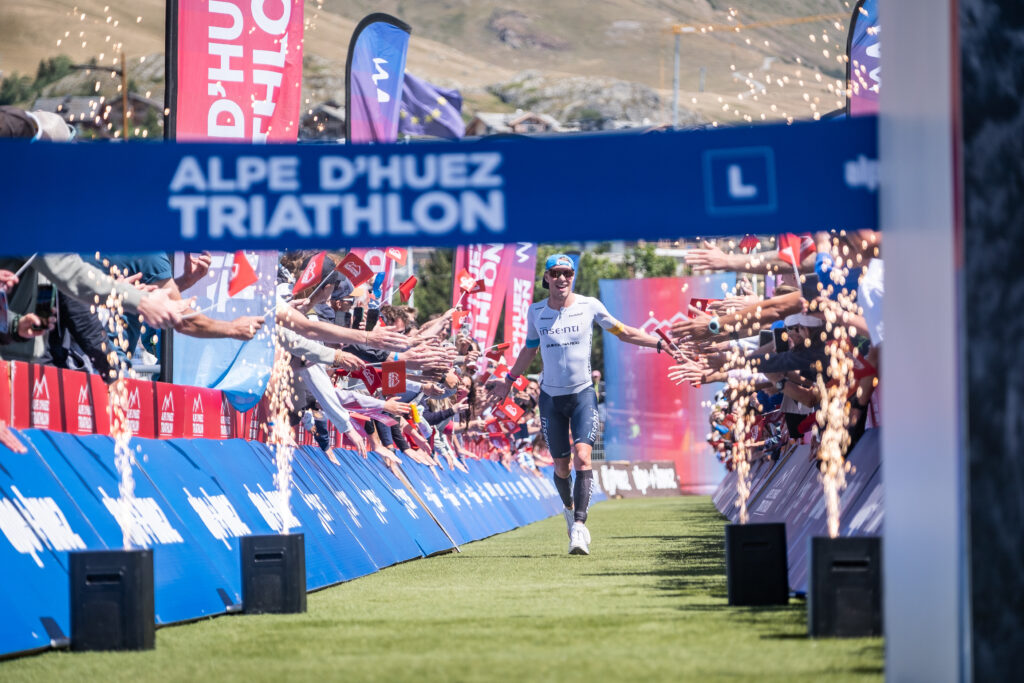
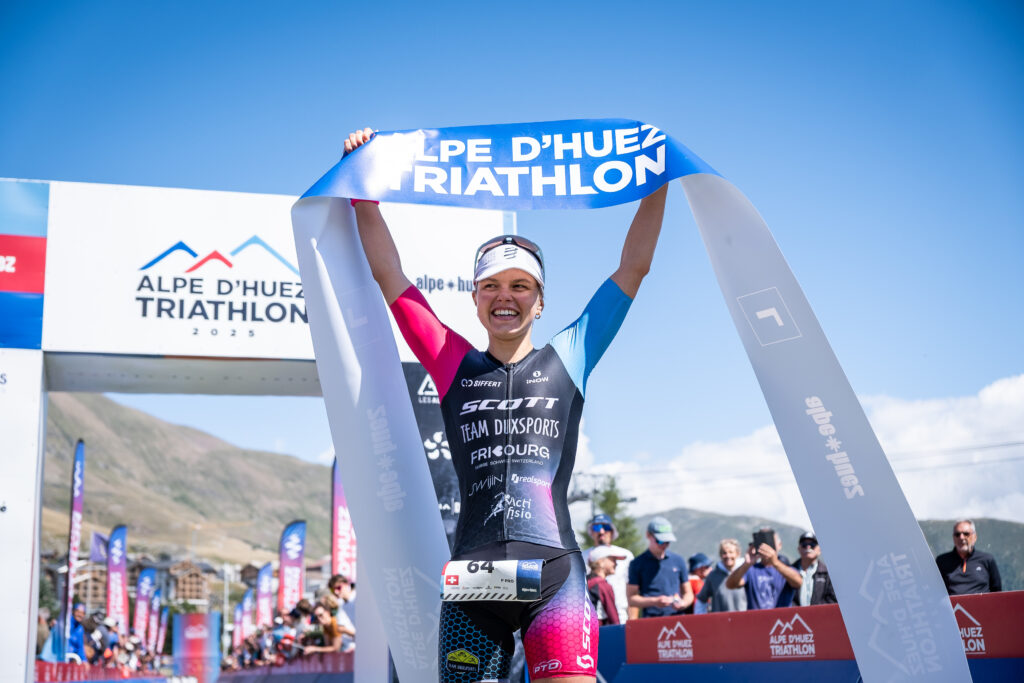
In the women’s race, multiple previous race winners and podium finishers made for a competitive bunch. Switzerland’s Alanis Siffert defended her title and bettered her time by a few minutes to win in 6:18:37. Compatriot Nina Derron, in her fifth attempt at the race, finally cracked the podium and finsihed second. French favourite Jeanne Collonge rounded out the podium setting the fasted bike split of the day of 4:24:16.
For many, Alpe D’Huez might be a bucket list race, only to be experienced once, and that would be enough to experience the unique magic this race offers. But, for me and so many others, one pilgrimage just isn’t enough. Whether it’s been crushing defeat or having a personal best performance, Alpe D’Huez is always calling.
Tags:
Alpe D'HuezDestination RaceTravelTriathlon Alpe D'HuezContinue the discussion at forum.slowtwitch.com
24 more replies




Excellent article, thank you very much. The logistics are also putting me off a bit but the race sounds like one you definitely want to do and then come back to many times. It might not be next year on the list but hopefully 2027.
Great article that depicted brilliantly the unique atmosphere of this race.
I highly recommend hooking up with John Newsom and his Epic Camps. A full week+ of training in the region fully supported - transportation, lodging, logistics, etc. - and basically nothing you need to figure out or manage on your own. If you love riding you’ll also get to hit many great climbs in the week leading up to the race. We started day 1 with a spin up Mont Ventoux.
I raced it this year. I developed a love hate relationship with the race. I was humbled, my ego crushed. God i love that race.
Just for the sake of nitpicking:
So the « col de la Morte » would translate litteraly as the « dead woman’s pass ».
This sounds great. I could definitely see myself doing that in 2027. Thanks!
Excellent read - I’m fully prepared to enter next year if I can. Did Alpe D’Huez last year on it’s on and loved it, so the triathlon has always appealed. I didn’t realise the long version took that route though!!
My only concern would be the logistics but with a campervan it’s not so difficult to get down there with all my gear. Would worry about the drive up to the hotels at the top more than anything!!
You don’t have to stay at the top. Lots of people stay at the bottom. Some pros / cons but I stayed low last year and would do the same again.
How did you get down with all your stuff at the end? I think cycling down would kill me after all that… Especially with bags etc.
I biked back to T1 after the finish. I didn’t look forward to it, but it was not that bad. You get some pretty awesome views.
I did cycle down with a transition bag/gear on my back … didn’t rush post race … just when I felt ready (and was with group of friends) … it was totally fine … just chill not trying to do quickly … was kinda serene actually - not many people around by then. YMMV
I stayed at the bottom also, in Allemond. I would do it again.
I just had to go to the top once to get my bib, the day before the race.
The route down by bike after the race was really not that bad, especially via Villars-Reculas.
I think that was the route I cycled down when I did the bike last year. Definitely will look into it.
He doesn’t run every camp every year. I know he’s doing a different Europe camp in 2026 so 2027 may be back to ADH.
What? You mean you didn’t race of a top 10 all time on the Alpe d’Huez downhill segment? (pink font optional)